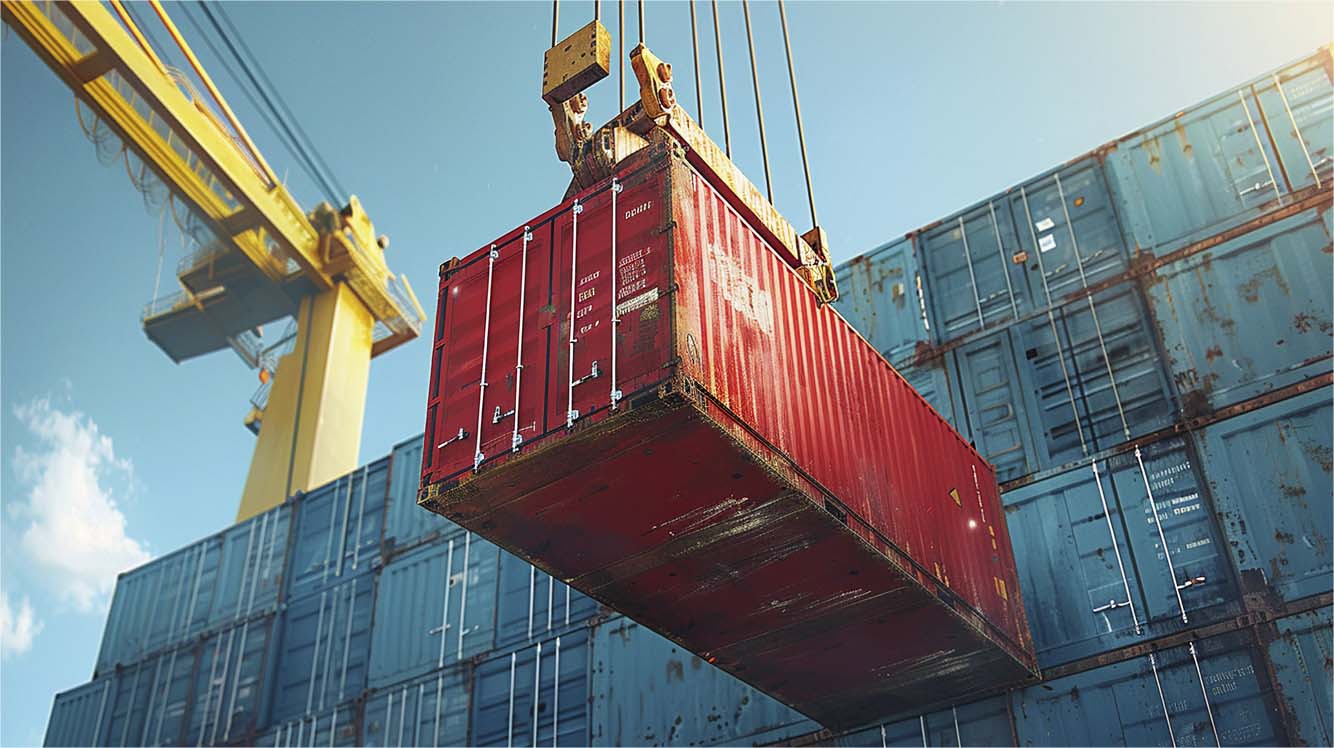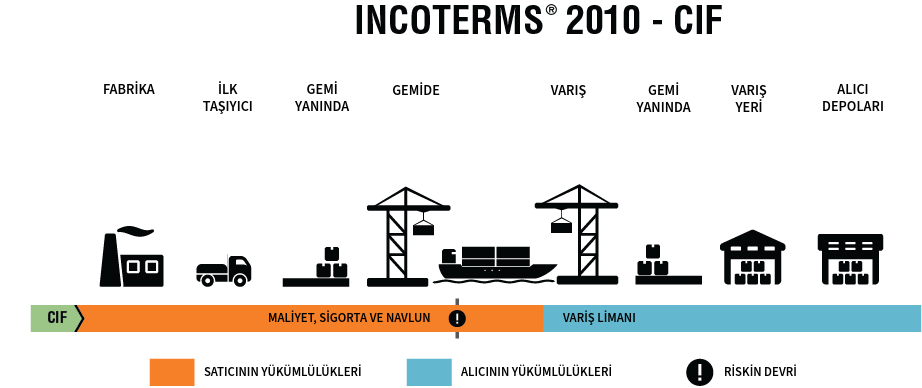
Cost, Insurance, and Freight (CIF) delivery method is one of the frequently encountered delivery methods in international trade. It is based on the seller transporting the goods from the loading port to the ship and delivering them. The CIF (Cost, Insurance, Freight) term means cost, insurance, and freight, and this delivery method indicates that the seller is responsible for the process until the goods are delivered to the buyer. The delivery of the goods to the buyer begins at the loading port and occurs once the transportation and insurance processes are completed. While offering many advantages to the buyer, it also imposes obligations on the seller.
What is CIF?
The CIF (Cost, Insurance, and Freight) delivery method is one of the oldest methods used to determine the mode of delivery of goods. CIF Incoterms is one of the Incoterms documents organized by the International Chamber of Commerce (ICC) in 1936, and it clearly defines the obligations of the seller. The seller assumes the risks that may arise during transportation and, according to the CIF shipping method, is responsible for paying transportation insurance and freight costs. CIF incoterms appear in the ICC brochures of 1936, 1953, 1990, 2000, 2010, and 2020, and are frequently preferred in international trade. With CIF, the seller bears all transportation costs and insurance expenses until the goods reach the destination point, while the buyer is responsible for the process after arrival. It offers less risk to the buyer and clearly defines the seller’s obligations.
What is CIF Loading?

CIF Loading is an important concept in the commercial relationship between the seller company and the buyer company. It is based on the seller selling the product to the buyer company and covering all costs before delivery. In other words, the seller bears all expenses such as transportation and insurance of the product and delivers it to the buyer.
What is CIF in the Contract?
In the contract, CIF, as an abbreviation of “Cost, Insurance, and Freight,” is an important legal concept. It determines the responsibilities regarding the delivery of the goods specified in the sales contract to the buyer. According to CIF terms, the seller covers the cost, insurance, and freight of the goods, allowing the buyer to expect the goods to reach the designated port. It helps clearly define the obligations between the parties and ensures that commercial transactions are carried out more systematically.
What is the Expansion of CIF?
CIF is an economic term used as an abbreviation of the English phrase. Its full form “Cost Insurance Freight” is widely used in international trade. Its Turkish equivalent is “Maliyet Sigorta Navlun.”
Is CIF Preferred in International Sales Agreements?
CIF is one of the terms added in international and domestic sales contracts. It was developed for use in international commercial agreements. However, due to contractual freedom, it can also be preferred as the delivery method in domestic sales contracts. CIF aims to define the seller’s obligations while minimizing the risks for the buyer.
What Are the Differences in Transportation Methods with CIF?

During the signing process of the contract between the exporter and the importer in international trade, the mode of transportation is an important detail. Transportation methods play a critical role in ensuring safe and efficient trade. Especially, the CIF delivery method involves transportation conditions determined by the seller, which include important considerations regarding the safety of the goods. It reduces many risks under the seller’s responsibility and offers a safer shopping experience for the buyer. The CIF delivery method is based on the seller selling the product to the buyer and covering all costs before delivery. This ensures that the buyer faces fewer risks during transportation. While the seller takes all necessary precautions to ensure the safe arrival of the goods at the destination, the buyer only concerns themselves with the receipt process. Thus, both parties can maintain their commercial relationship more healthily.
When CIF is Included in the Contract, Which Year’s Brochure Is Considered Applicable?
When the term CIF appears in a contract, it is not explicitly stated that the parties only refer to the year in which CIF is included; this must be clearly specified. To avoid ambiguity, the preferred wording is INCOTERMS 2010-CIF-St. Petersburg. This prevents potential disputes between the parties to the contract. Additionally, this wording clearly states the obligations and rights of the parties, increasing the validity of the contract.
Who Is Responsible for Insurance of Goods with CIF Delivery?
CIF delivery method requires insurance related to the transportation process when goods are transported by sea. The insurance for shipments made under CIF delivery must be arranged by the seller. However, the insurance should be at a minimum level and arranged by a reliable company for international transportation. Under these conditions, risks are minimized for both the seller and the buyer, preventing potential losses. The requirement for insurance in CIF delivery increases the security of the transportation process.
You can visit our page for more information about our Sea Freight services!
Buyer’s Responsibilities in CIF Delivery
The CIF delivery method constitutes an important issue regarding the obligations of the buyer in international trade. While the seller performs unloading operations at the warehouse necessary for transportation and handles import procedures, the responsibilities of the buyer are clearly defined. The buyer is responsible for customs procedures, internal transportation, and other obligations. The buyer must cover related expenses. Within the scope of CIF delivery, the obligations between the buyer and seller are clearly defined.





